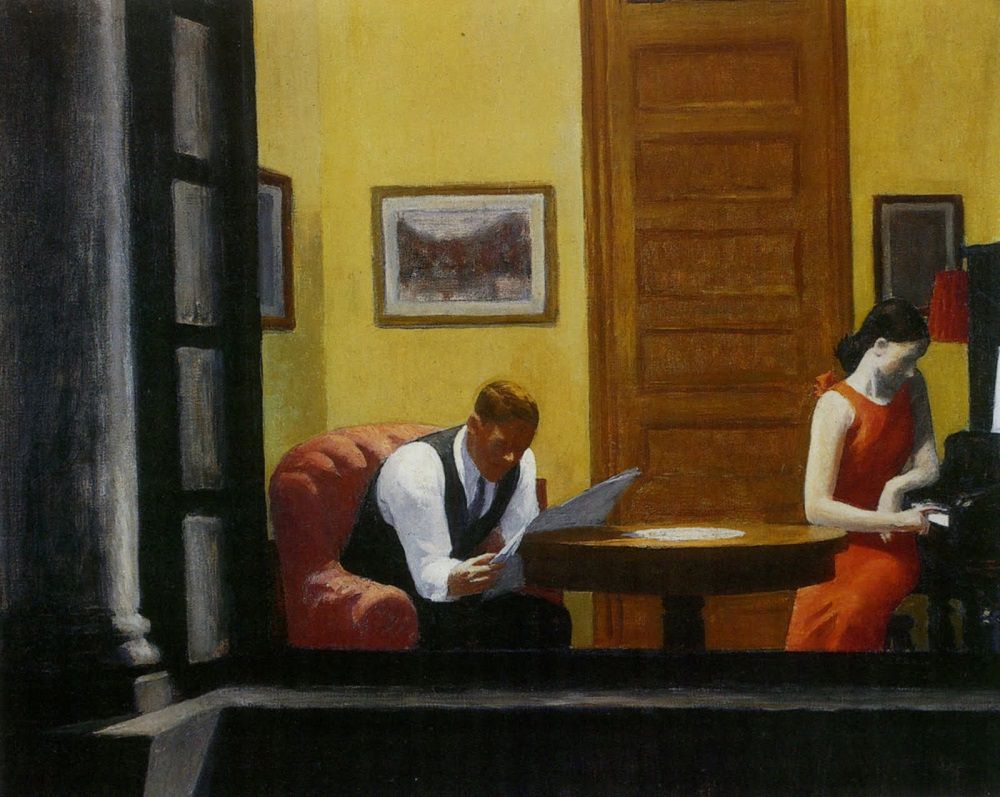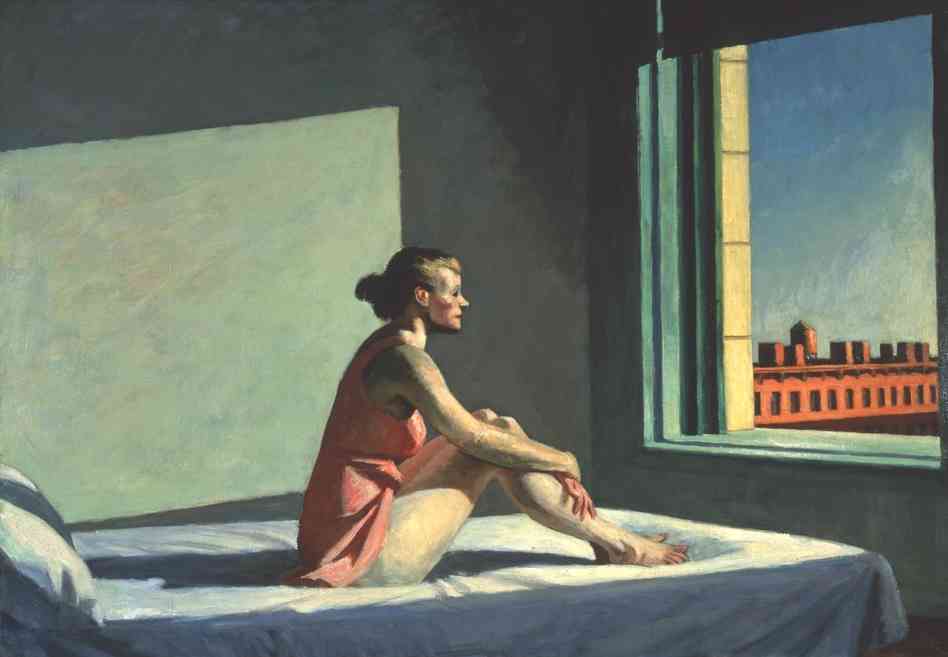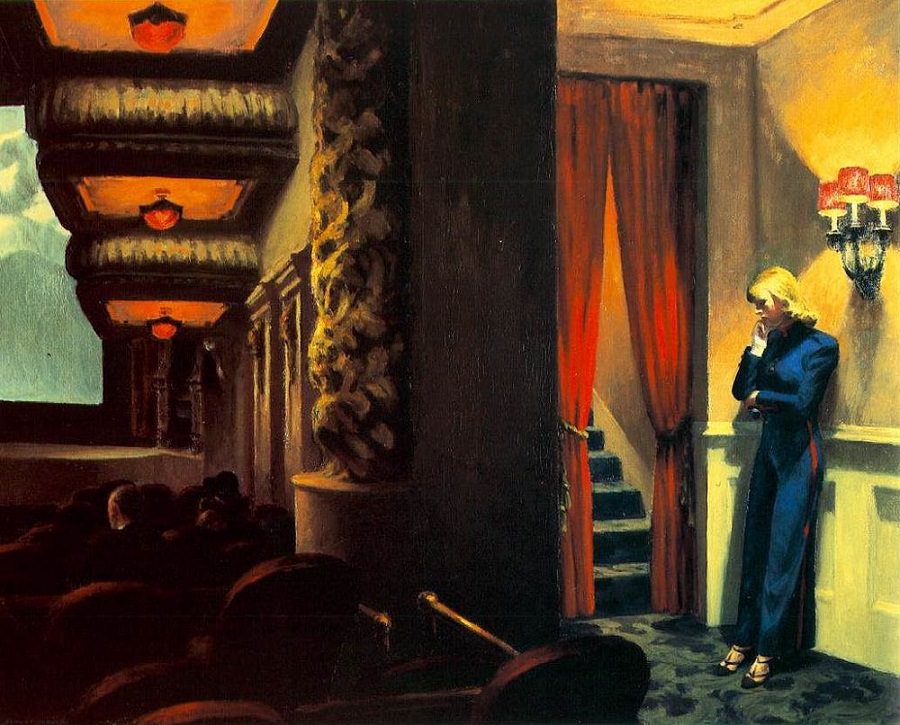


1. Edward Hopper, 1932, Room in New York
2. Edward Hopper, 1952, Morning Sun
3. Edward Hopper, 1939, New York Movie
I recently had the notion to begin cataloging various items of “Inspiration,” which like so many ideas, quickly demanded I think again. It feels better to distance myself from the well-traveled claim of inspiration, which carries with it that suspicious allure of me, myself and I. Perhaps a series of tokens from my own visual meanderings is something waiting to happen, rather than something in itself. And if two heads are better than one, it follows that inspiration is best served when informed by others, and I elect books to be the mediator of inspiration found here. Books are filled with references that beg further study, and I aim to record field notes here.
When Breath Becomes Air leads me to photos of the desert in Kingman, AZ, where the author spends his childhood; The Guest Cat leads me to a recording of the Japanese bush warbler’s call; and the book I read now, The Lonely City by Olivia Laing, leads me to Edward Hopper’s paintings, which she examines in an attempt to understand and find reprieve from urban isolation. Room in New York, she writes, “ripples with unexpressed frustration, unmet desire, violent restraint.” Morning Sun focuses on a girl in a messy bun with “something desolate about her eyes and jaw,” and in New York Movie, a woman leans against a wall, alone and pensive, a few empty seats before her. The mood of each is unsettling, yet with one Hopper painting after another, there is a sense of relief that swells from the realization that loneliness is not rare, that it is prone to rear its head anywhere humans are found. But is there any kind of meaning or redemption in loneliness? I intend to find out.
Best, Yuri
@yuriroho
Follow
2. Edward Hopper, 1952, Morning Sun
3. Edward Hopper, 1939, New York Movie
I recently had the notion to begin cataloging various items of “Inspiration,” which like so many ideas, quickly demanded I think again. It feels better to distance myself from the well-traveled claim of inspiration, which carries with it that suspicious allure of me, myself and I. Perhaps a series of tokens from my own visual meanderings is something waiting to happen, rather than something in itself. And if two heads are better than one, it follows that inspiration is best served when informed by others, and I elect books to be the mediator of inspiration found here. Books are filled with references that beg further study, and I aim to record field notes here.
When Breath Becomes Air leads me to photos of the desert in Kingman, AZ, where the author spends his childhood; The Guest Cat leads me to a recording of the Japanese bush warbler’s call; and the book I read now, The Lonely City by Olivia Laing, leads me to Edward Hopper’s paintings, which she examines in an attempt to understand and find reprieve from urban isolation. Room in New York, she writes, “ripples with unexpressed frustration, unmet desire, violent restraint.” Morning Sun focuses on a girl in a messy bun with “something desolate about her eyes and jaw,” and in New York Movie, a woman leans against a wall, alone and pensive, a few empty seats before her. The mood of each is unsettling, yet with one Hopper painting after another, there is a sense of relief that swells from the realization that loneliness is not rare, that it is prone to rear its head anywhere humans are found. But is there any kind of meaning or redemption in loneliness? I intend to find out.
Best, Yuri
@yuriroho
Follow


I’m surprised to read about your new format’s rational and appreciated the insight. Mesmerizing depth in Hopper’s humans.